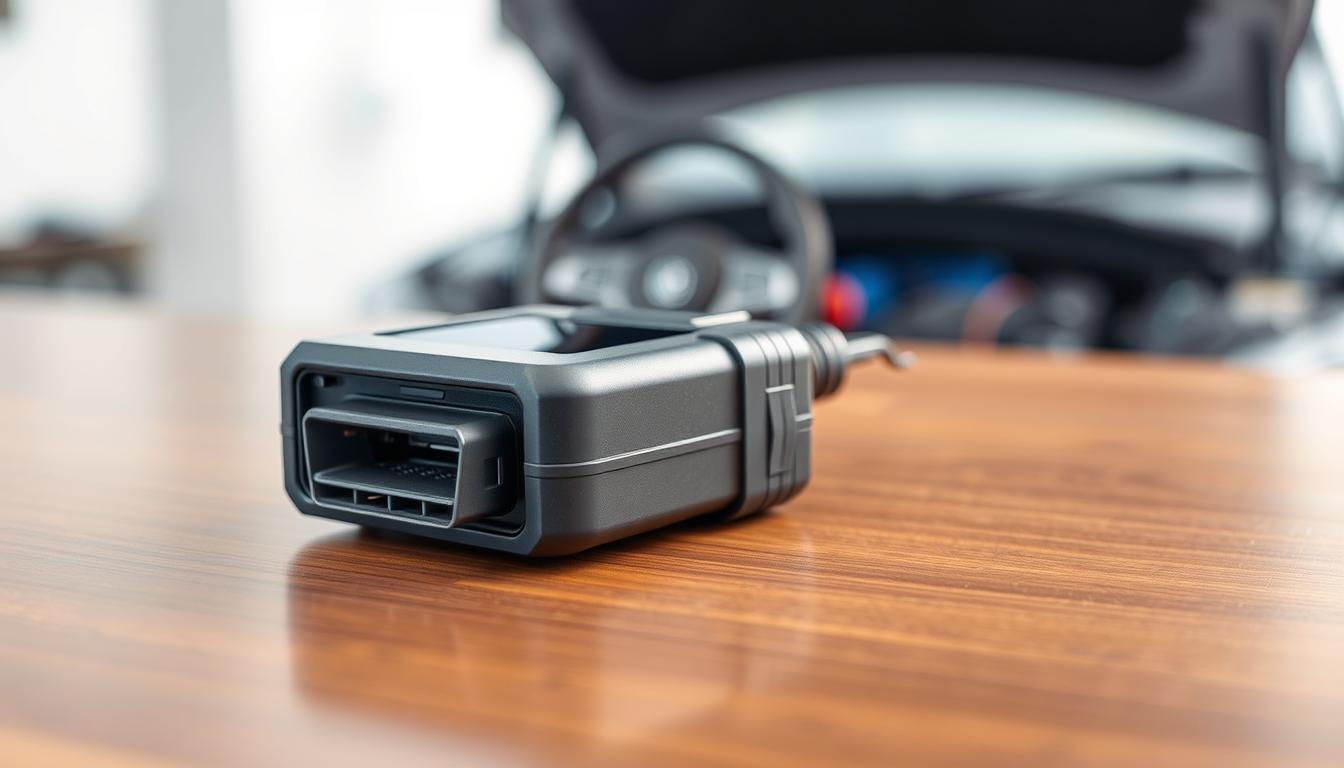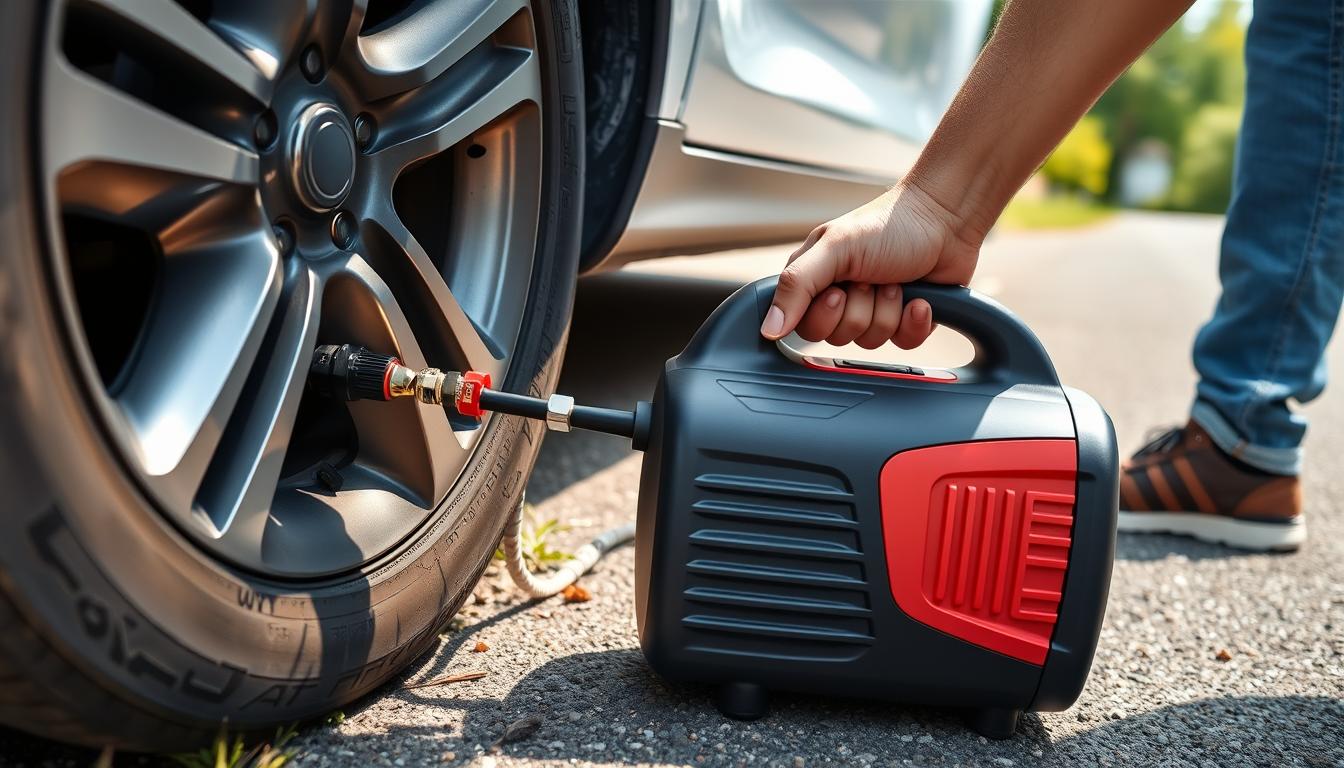
The top ice traction tire in 2024 is the Michelin X-Ice Snow. It shines with great grip and handling on snow and ice. Yet, it doesn’t stop there. This tire is also good for various terrains, perfect for any winter situation.
Michelin uses smart technology in these tires. They put inclusion technology in the tread compound and make sipes with different thicknesses. This gives you great traction on icy and snowy roads. It also helps keep your car balanced on wet streets.
People who drive in tough winter weather know how vital ice traction tires are. These tires are made to handle the harshest cold. They outperform all-season and summer tires with better grip, handling, and braking. Choosing these tires lets you drive with confidence in snow, ice, and slush. You get a safer and more dependable journey in winter’s worst.
Understanding the Importance of Winter Tires
The winter season sparks a key debate between all-season tires and winter tires. All-season tires are popular, but it’s vital to know their drawbacks in severe winter.
Limitations of All-Season Tires in Winter Conditions
All-season tires offer a mix of performance in various weather. Yet, they can’t fully meet the demands of severe snow and icy roads. While they work okay in light snow, they often lack the grip and control in heavy snowstorms or on packed ice.
Benefits of Winter Tires for Snow and Ice Traction
Winter tires are made to do their best in cold, winter weather. They have special rubber and treads, with a 3 Peak Mountain Snowflake (3PMSF) certification for improved traction on snow and ice. Brands like Blizzak from Bridgestone, and studded or studless winter tires from Nokian and Michelin, help your car stay stable and controlled, even in tough winter conditions.
Types of Ice Traction Tires
Choosing the right ice traction tires is crucial for winter driving. You have many options, from studded to studless winter tires and more. Each type offers different levels of grip, control, and safety. It all depends on what you need for snowy or icy roads.
Studded Winter Tires
Studded winter tires have metal studs for better ice grip. These studs dig into ice, reducing slippage and sliding. But, places may ban them due to their impact on roads and noise.
Studless Winter Tires
Want something quieter and eco-friendly? Studless winter tires don’t have metal studs but offer great traction. The Bridgestone Blizzak is famous for this. It uses special materials and designs for more control in cold weather. They’re a good option that follows regulations and is kind to the road.
Ice Traction Tires for Different Vehicle Types
Think about your vehicle’s needs when picking ice traction tires. SUV winter tires and light truck winter tires boost stability for larger vehicles. All-weather tires with the 3 Peak Mountain Snowflake (3PMSF) symbol work well in many winter conditions. The right tires help you handle harsh winter weather no matter your vehicle type.
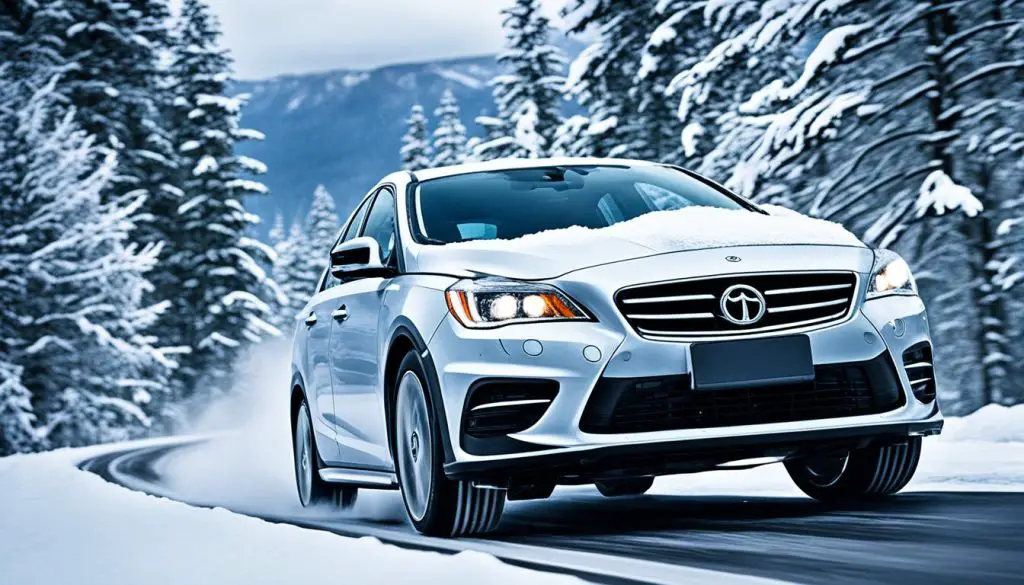
Top-Rated Ice Traction Tires on the Market
In harsh winter weather, your tires are your first line of defense. The best models for ice and snow are highly recommended by experts and users. The Michelin X-Ice Snow, Nokian Hakkapeliitta R5, and Continental VikingContact 7 are among the top picks.
Michelin X-Ice Snow
The Michelin X-Ice Snow is a top choice for 2024, rated at 9.8 stars. It excels on snow, ice, and various terrains, thanks to special technology. Features like notched sipes and varying sipe thickness help it handle snow and provide excellent ice grip. This tire is priced at about $140 each.
Nokian Hakkapeliitta R5
The Nokian Hakkapeliitta R5 is also a leading choice, rated at 9.7 stars and cost about $115 each. It’s made by the top brand Nokian for superior traction and control in severe winter conditions. Drivers will like its long wear life of 6 years/40,000 miles.
Continental VikingContact 7
Ranked highly for ice traction, the Continental VikingContact 7 scores 9.6 stars and costs around $110 each. It comes with a 6-year tread warranty and free replacement the first year. The tire’s design and compound make it a solid choice for snowy and icy roads.
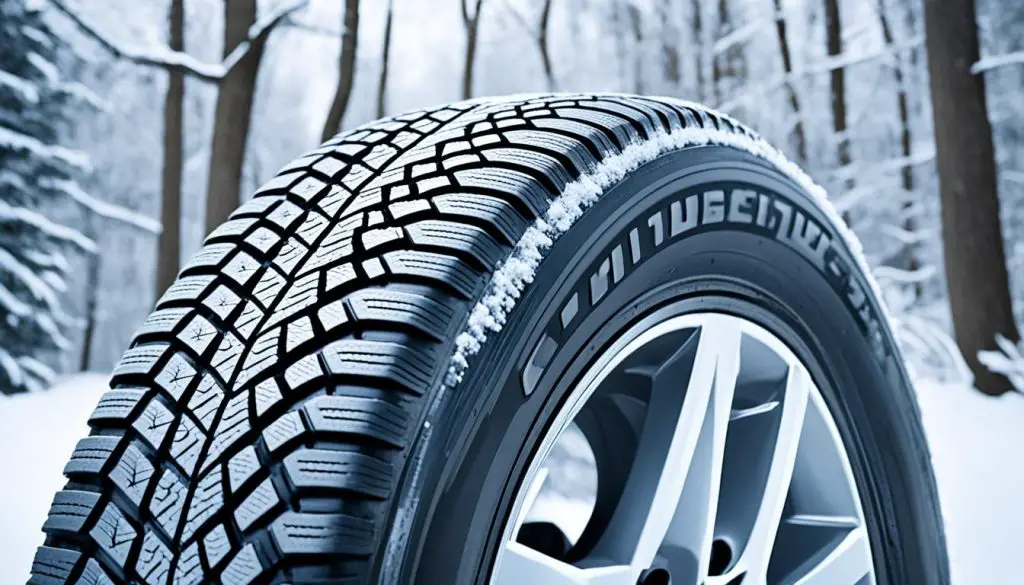
Choosing the Right Ice Traction Tires for Your Needs
Choosing the perfect winter tire involves looking at several key factors. The driving conditions where you live, the kind of vehicle you own, and your budget are major points. They help find the ideal set of ice traction tires for you.
Factors to Consider When Selecting Winter Tires
First, think about the driving conditions in your area. If there’s lots of snow and the roads get icy, a top-notch snow tire is a must. Look for ones with the Three-Peak Mountain Snowflake (3PMSF) symbol. They’re made to excel on snow and ice.
Also, consider what kind of vehicle you have. Different winter tire specs are needed for front-wheel, all-wheel, or rear-wheel drive. It’s smart to talk to a tire expert. They can ensure you get the right ice traction tires for your car or truck.
Lastly, your budget matters a lot. Good snow tires can be pricey, but they’re crucial for safety in winter. These tires usually cost between $70 and $130 each. The final price varies based on the tire’s brand, size, and features.
Tire Size and Compatibility with Your Vehicle
Make sure any winter tires you pick fit your vehicle perfectly. Checking your owner’s manual is a start. Or, get advice from a tire pro. They’ll help you find the right tire size and ensure it fits your car or truck well.
Proper Installation and Maintenance of Ice Traction Tires
Getting your winter tire installation right is key for safety. Make sure to have winter tires on all four wheels. Putting them on just the front or rear can make your car handle badly and skid more. It also makes stopping on snow and ice harder.
Changing your tires at the right time is very important. Use winter tires when the first snow falls, and then switch them back in the spring. Keep your unused tires in a cool, dry place to keep them in good shape.
Don’t forget to rotate your tires regularly. Ideally, rotate them every 5,000 to 8,000 miles. This prevents uneven wear and helps keep traction at its best during winter. Doing these things will ensure your winter tires work as they should, keeping you safe even in rough weather.
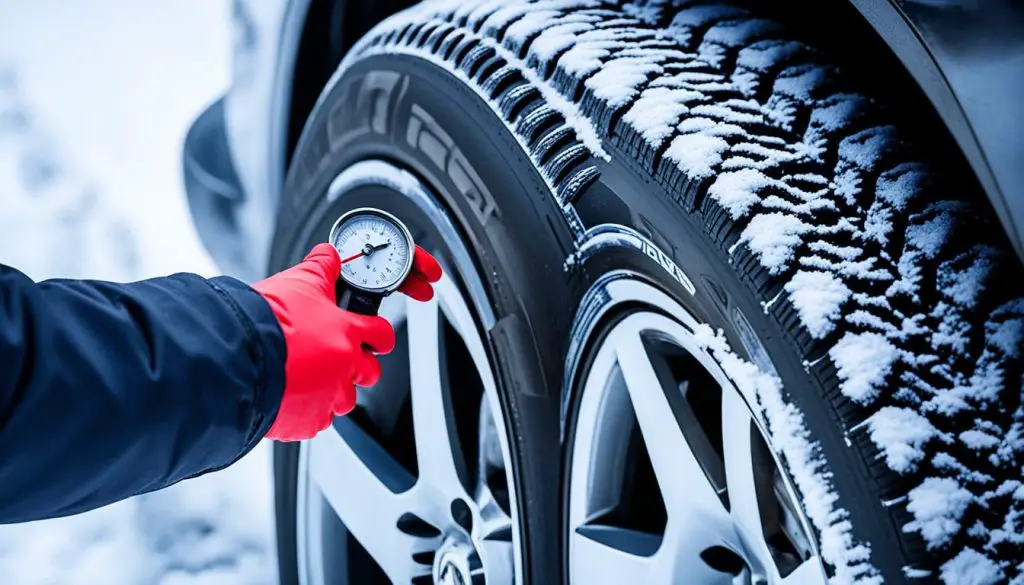
Conclusion
Ice traction tires are crucial for drivers in snowy and icy areas. They help overcome the limits of all-season tires. This means drivers can choose the right ice traction tires for their vehicle.
Options like the Michelin X-Ice Snow, Nokian Hakkapeliitta R5, and Continental VikingContact 7 offer great grip, handling, and control. These are key in severe winter weather.
To boost winter tires‘ performance and life, proper handling is a must. A smart choice in ice traction tires and good maintenance keep drivers safer in extreme conditions. Good vehicle control and prep for severe weather are vital for winter driving safety.
Spending on ice traction tires and upkeep pays for itself. It offers peace of mind and better vehicle control in the winter. With this investment, drivers can face tough winter driving confidently and safely.
FAQ
What is the best winter tire in 2024?
Experts say the Michelin X-Ice Snow shines as the top winter tire in 2024. It’s praised for excellent grip on both snow and ice. This tire also performs well on other terrains. It’s a wise choice for battling bad weather.
How do all-season tires compare to winter tires?
All-season tires fall short in extreme conditions. They do okay in light to moderate snow. But, a summer tire will beat them on dry or wet roads when it’s warm. For deep snow or ice, winter tires are the clear winner.
What are the different types of winter tires?
Winter tires come in two main types: studded and studless. Studded tires offer top traction on ice but are noisier. Studless tires, like Blizzak, give great control in snowy, icy, or slushy conditions. They work well even in very cold weather.
How much do winter tires typically cost?
Prices for winter tires range from to 0 per tire. The cost depends on your car and where you drive. In snowy areas, investing in good winter tires could prevent accidents. This decision can make winter driving much safer.
Is it important to have winter tires on all four wheels?
Mounting winter tires on all four wheels is key for the best safety and performance. Having them only on the front or back causes handling problems. This can lead to skidding and less braking power on snow and ice.
